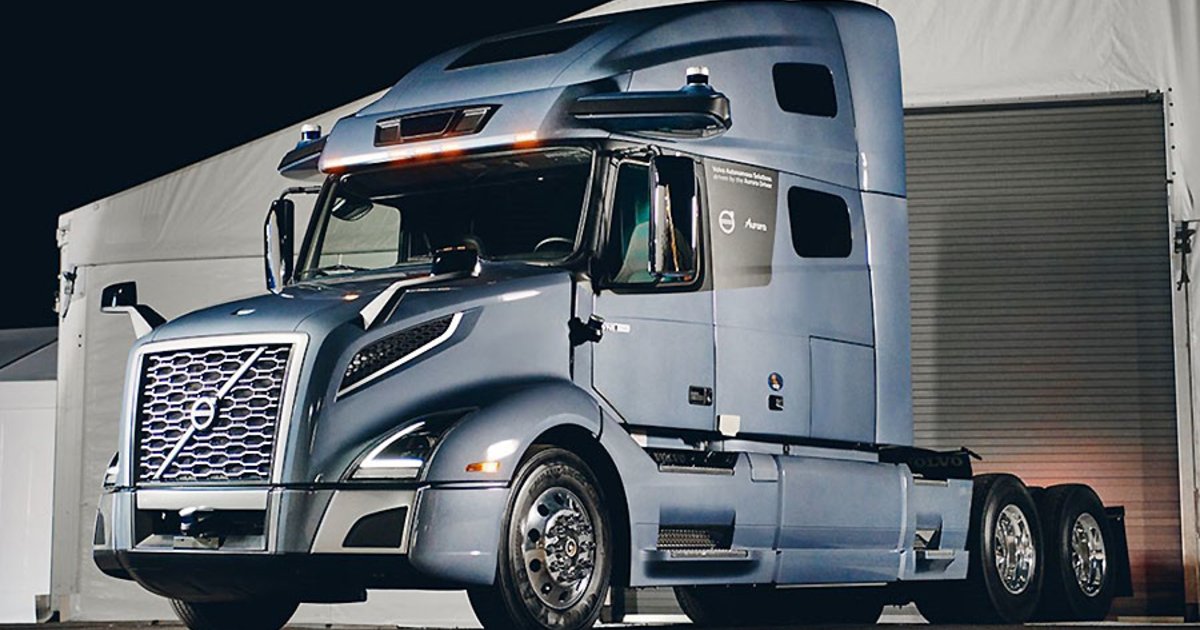
ONTARIO, Calif. — Peter Voorhoeve remembers talking at a conference in Singapore five years ago about the potential self-driving trucks held for the freight industry and wondering if any of it would come true during his career or even lifetime.
Now head of Volvo Trucks North America, Voorhoeve, 57, is part of the global leadership team helping to guide the company through rapid technology advancements. Volvo has grabbed an early U.S. lead in heavy-duty electric trucks with 56 registrations for its Class 8 VNR Electric tractor. It has sales agreements that add up to 330 more VNR Electrics in addition to the vehicles in operation.
And it is pushing into autonomous trucking. With Aurora Innovation as the driving system supplier, Volvo has an initial deal to begin hauling freight with its Class 8 VNL autonomous truck prototype for DHL in Texas. For now, a safety driver will be in the cab. At some point, Volvo and Aurora plan to pull the human monitor and gain the cost-saving potential Voorhoeve discussed in Singapore.
Voorhoeve sat down here with News Editor Jerry Hirsch near where Volvo’s electric trucks are operating, hauling goods from the ports of Los Angeles and Long Beach to inland distribution centers, to discuss the progress of self-driving trucks and Volvo’s electric vehicles. Here are edited excerpts.
Q: How have your views changed on the rollout of autonomous trucks?
A: Five years ago, I would say you were not going to see it happen in my lifetime. Now I say that absolutely this will happen. When? It is going to happen in the second part of this decade and earlier in the second part rather than later.
How will it work? Will we see self-driving trucks going through the city every day?
We see autonomous solutions in very specific segments. It will be hub to hub and on the highway. You will choose a specific hub at one end and another at the other. It will be highly repetitive. They won’t be crisscrossing Texas in every direction. You can’t tell the truck to go here today and there tomorrow. This will work in specific, repetitive applications. It will be on specific legs and also on the legs that make sense — the ones where you can get the productivity increases.
What about the human drivers?
Obviously, when you don’t have a driver on the truck, that has an impact on the cost of operation. The leg in the middle is the least of the problem. You need to make sure the truck brakes and reacts and can get in and out of the hub. That is autonomous. It is just selective, specific segments where we see this happening. But you need a driver to load or unload and drive elsewhere.
How do you commercialize autonomous trucks?
When we go to market, Volvo will have the commercial relationship. Aurora is our development partner, but it is a Volvo service and a Volvo product that will be sold. It will be sold as autonomous transport as a service. While Volvo will hold the commercial relationship, how we do that and work with dealers will always comply with the law because there are all sorts of regulations with wholesalers, dealers, etc.
How fast do you see this transition for the trucks you are selling?
Our target is clear. By 2030, 50 percent of our Volvo truck offerings will be zero-emission and fossil-fuel free. That’s not so far away. And then, by 2040, we will be completely zero emission for the truck group.
How did you take the lead with electric semi-tractors in the U.S.?
It was our decision to go to the market earlier and with a truck with a little bit more limited range. People asked, “What can you do with a truck that just has a 150-mile range?” One of my favorite statistics is that 30 to 40 percent of all Class 8 trucks in North America drive less than 200 miles a day. Electrification ultimately is about helping disadvantaged areas. You want to improve the air quality and the quality of life around the Port of Long Beach and the Port of Los Angeles, and parts of New York. By starting early, we will directly and immediately impact the quality of life of these highly urbanized areas. And then the rest will come. The VNR Electric already has a range of up to 275 miles now.